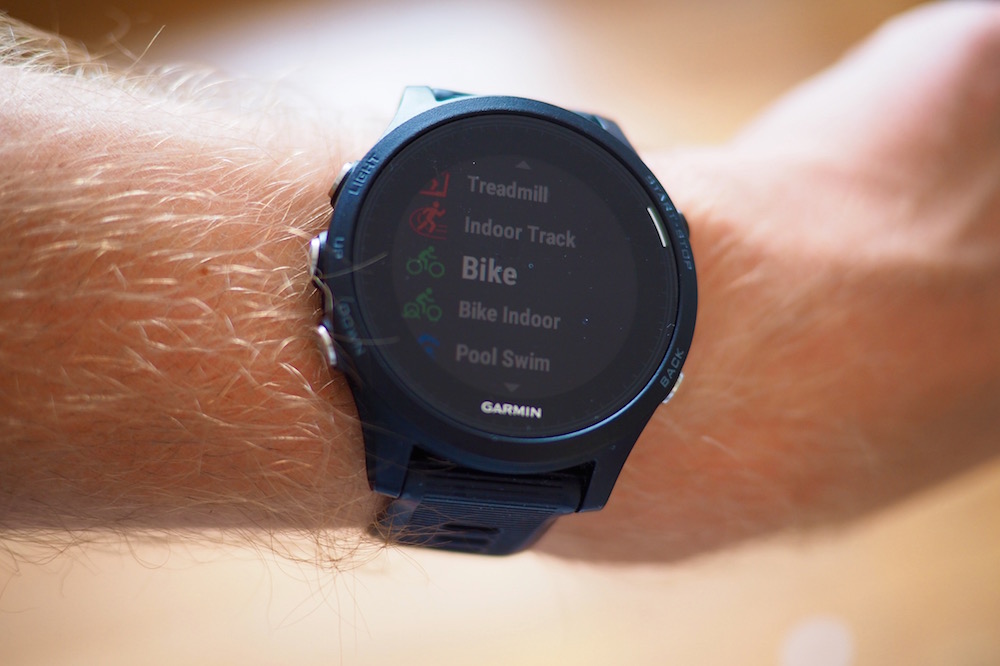Garmin Forerunner 935 review
The Garmin Forerunner 935 is the brand's premium performance watch that can do it all, but it might be overkill for some

At the Pinnacle of Garmin's Forerunner range, the 935 is a complex watch that takes a lot of time to get used to. It's full of useful metrics, although the Garmin Connect companion app ruins the experience a little.
-
+
Useful features
-
+
Great for running
-
+
Useful for commuting
-
+
Useful wearable metrics
-
-
Clunky software
-
-
Garmin Connect is frustrating to use
You can trust Cycling Weekly.
The Garmin Forerunner 935 is the brand's premium Forerunner offering, and one of its top 'multi-sport' watches, capable of recording running, cycling, swimming and other outdoor activities.
Whether a watch is multi-sport or single sport only, nowadays there's an expectation that it should also be capable of giving wearable metrics. By that I mean counting steps, calories and the like we've grown accustomed to from FitBit or even our mobile phone apps.
Garmin Forerunner 935: how is it as a wearable?

Not enough steps today...
The Garmin Forerunner 935 has a pretty comprehensive list of wearable data, whether you're after heart rate analysis, a step counter, a list of previous activities or calories burnt it can show you them by pressing down on the side of the watch. Each then has a slightly more detailed analysis page available if you press start when viewing the widget. It's easily customisable too, with plenty of further widget options available within the watch.
The problem is, the Garmin doesn't have the ease of use that I think is necessary for something to be a truly great wearable. The watch doesn't show you a huge amount of information per widget and very little of its firepower is actually dedicated to doing so.
Wearable data that I was actually interested in was sleep, weight and heart rate monitoring measured by the Foreunner's built in optical sensor. I did for a while input both of these into the Garmin Connect, the watch's companion app. However, Garmin Connect remains too clunky to be convenient and its confusing dashboard put me off trying to monitor my stats as regularly as I should have been.

Wrist based heart rate for pushing performance
For example, the sleep graphs are a little basic to gather any truly helpful data, unlike other sleeping apps that I've used on my phone. Light blue blocks mean light sleep, dark blue deep sleep and pink equals time awake.
Ultimately, there's a really large amount of data to unearth in the app, but it makes it a little difficult to find.
The latest race content, interviews, features, reviews and expert buying guides, direct to your inbox!
Garmin Forerunner 935: How is it as a training tool
As you might expect, this is where the Garmin finds its feet and similar to the brand's best bike computers that we have tested previously, the Forerunner 935 is a performance pusher in its own right. It really came into its own when running and the watch has neat customisable features; for example I had it set to flash my pace at every kilometer and it was an invaluable tool in getting my 5k and 1ok times down as well as at competitive events.

A LOT of different sports
After running for a short period of time it'll also tell you your performance condition helping guide you as to how hard you should exercise. This could be useful depending on how seriously you take your training and follow metrics. It even has the ability to guide you round a course via a simple line or compass like arrow pointing you in the right direction.
In terms of cycling, it's capable of a lot of things that Garmin's cycling units offer. For example it'll link with speed, cadence and power sensors; I was able to pair it to my Favero Assioma Duo pedals and there's an option to pair it to Shimano Di2, bike lights and other bike related stuff. It can offer navigation via courses and give your heart rate zone analysis.
Ultimately, if I was in to triathlon I could really see the benefits of the Forerunner 935 and its multi-sport performance capabilities. Likewise, if you don't have the budget for both products but do both sports then I think it would work well.
However, its size and shape does make it harder to use as a cycling computer. I found that the screen wasn't large enough to display all the metrics that I like when riding. To put that into context, I usually have seven or so screens open on my Wahoo Elemnt cycling computer. On top of this, it's more difficult to change data screens with the watch on your wrist when travelling at speed. Although it is possible to get an out front mount that holds the watch.

Heart rate monitoring
In the end, I mostly used it for commuting when I didn't want the hassle of a big computer but was still travelling enough distance to warrant uploading to Strava (every little helps, after all). For this same reason it was useful on the many trips and launches I go on, where it's usually harder to attach a cycling computer.
Ultimately, for the fitness focussed the Garmin Forerunner 935 has plenty of potential, especially for those into multiple sports. If you want something primarily for cycling then a cursory glance at the Garmin Forerunner 735XT shows it to be able to do all the cycling things that the 935 can, although it's fitness pushing potential is more limited. It's worth considering, though, seeing as it's £139 cheaper.